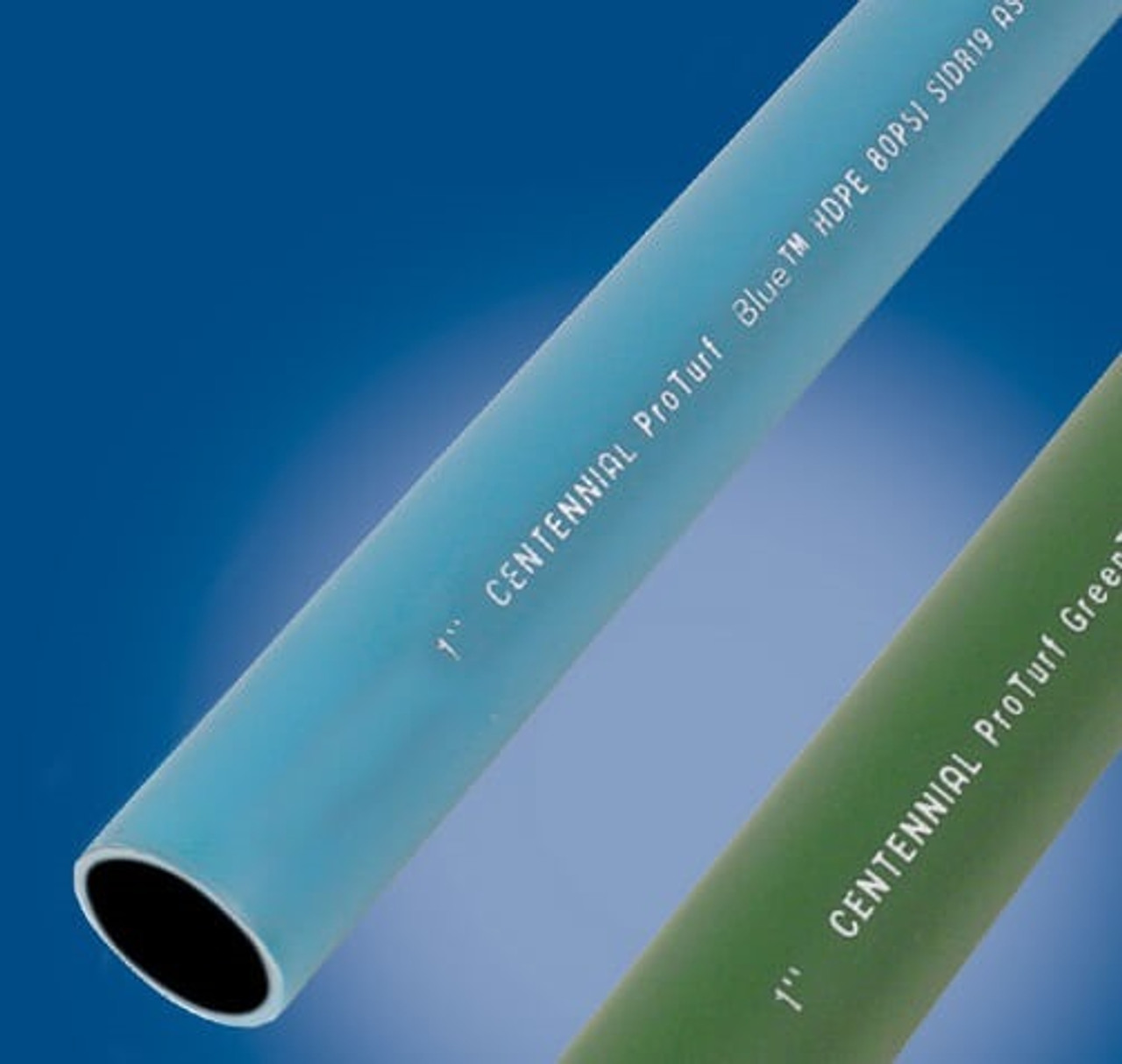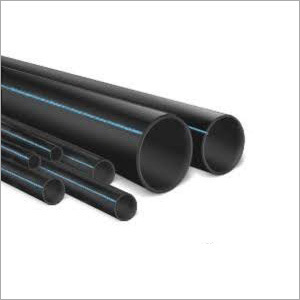How American Plastics HDPE Pipe Manufacturing Maintains Sustainability
Wiki Article
Explore the Production Refine Behind High-Quality HDPE Pipe and Its Applications
The manufacturing procedure of top quality HDPE pipes is complex and methodical. It starts with the option of raw products that enhance performance. Following this, ethylene goes through polymerization to develop material, which is then formed with extrusion. Quality assurance is critical, guaranteeing that the final product meets rigid criteria. The journey of HDPE pipelines does not end with manufacturing. Their applications throughout different markets expose a more comprehensive significance worth examining.Recognizing HDPE: Properties and Advantages

High-density polyethylene (HDPE) is a versatile polycarbonate known for its toughness and resistance to numerous environmental variables. This material shows excellent tensile toughness, making it suitable for requiring applications. Its low-density framework adds to a lightweight item, helping with ease of managing and installation. HDPE also showcases remarkable resistance to chemicals, which reduces deterioration when exposed to rough materials.
The material's low wetness absorption better enhances its long life, making it ideal for use in pipelines and tank. Furthermore, HDPE is immune to ultraviolet (UV) radiation, ensuring that items maintain their stability also when revealed to sunlight. In addition, its versatility enables the creation of intricate shapes without endangering stamina. The eco-friendly nature of HDPE, often acquired from recycled products, contributes to its appeal, promoting lasting methods in production. On the whole, these residential or commercial properties and advantages make HDPE a favored selection for various industrial and consumer applications.
Resources Selection for HDPE Manufacturing
The option of raw products for HDPE manufacturing is vital to validate the last item satisfies the preferred requirements and quality standards. High-density polyethylene (HDPE) is largely produced from polymerized ethylene, originated from nonrenewable fuel sources such as all-natural gas or crude oil. The high quality of these feedstocks considerably affects the mechanical and thermal buildings of the last HDPE.Ingredients also play a considerable function in enhancing HDPE's efficiency, including antioxidants, UV stabilizers, and colorants, which enhance longevity and resistance to ecological variables. The choice procedure must take into consideration not only the chemical composition of the raw products however likewise their processing features to guarantee reliable manufacturing.
Furthermore, the sourcing of basic materials need to focus on sustainability and compliance with ecological laws, as accountable methods are vital in today's market. Ultimately, careful resources option lays the structure for creating top notch HDPE pipes suitable for diverse applications.
The Extrusion Refine: Forming HDPE Pipe
The extrusion procedure plays a crucial duty fit HDPE pipelines, beginning with careful material prep work methods that ensure perfect flow and uniformity. Just as important is the style of the die, which straight influences the final dimensions and surface quality of the pipeline. With each other, these aspects add substantially to the effectiveness and high quality of HDPE pipeline manufacturing.Product Preparation Methods
Reliable manufacturing of HDPE pipelines begins with precise product prep work methods, particularly the extrusion process. Throughout this phase, high-density polyethylene material is very first dried out to remove dampness, making sure optimal circulation qualities. The resin is after that fed into the extruder, where it undertakes heating and melting, changing right into a viscous state. This home heating procedure is carefully managed to keep the product's honesty and performance. The liquified HDPE is required via a die, forming it into a constant pipe type. Appropriate temperature monitoring during extrusion is important, as it directly impacts the product's properties and the end product high quality. As soon as formed, the HDPE pipe is cooled and reduced to defined lengths, prepared for subsequent handling and applications.Die Style Value
Precision in die design plays a crucial duty in the extrusion process of HDPE pipelines. The die works as the final shaping tool, straight influencing the pipe's measurements, wall surface thickness, and surface coating. A well-designed die assurances consistent product flow, minimizing issues such as irregularities and weak points. The geometry of the die must be maximized to fit the details residential or commercial properties of HDPE, including its viscosity and thermal habits during extrusion. Additionally, the cooling rate of the product as it travels through the die can considerably impact the pipe's structural honesty. Consequently, purchasing sophisticated die modern technology is crucial for producers aiming to generate high-grade HDPE pipes that meet industry criteria and client expectations.High Quality Control Measures in HDPE Production
Although numerous aspects affect the high quality of HDPE pipeline production, effective quality assurance actions are important to ensure uniformity and integrity in the final product. Key quality assurance methods consist of rigorous material examination, confirming that the raw polyethylene fulfills established criteria for purity and thickness. Throughout the extrusion procedure, parameters such as temperature, stress, and cooling time are closely kept track of to preserve dimensional precision and architectural stabilityFurthermore, post-production screening is necessary; suppliers commonly carry out hydrostatic tests to assess the pipeline's stamina and resistance to pressure. Aesthetic assessments for surface area issues better boost quality control. Certification from relevant standards organizations, like ASTM or ISO, offers an additional layer of reputation. By carrying out these thorough quality assurance measures, manufacturers can lessen issues, boost efficiency, and make certain that the HDPE pipes fulfill the particular needs of various applications, eventually bring about consumer fulfillment and trust in the item.
Applications of HDPE Pipeline Across Industries
HDPE pipes are made use of across different fields due to their durability and convenience. In water distribution systems, they ensure reliable distribution, while in wastewater administration, they give dependable remedies for waste transport. Additionally, agricultural watering networks gain from HDPE's resistance to deterioration and flexibility, making it a suitable choice for modern farming techniques.
Water Circulation Solutions
A substantial variety of industries rely on high-density polyethylene (HDPE) pipelines for effective water circulation systems. Understood for their sturdiness and resistance to corrosion, HDPE pipelines are extensively utilized in local water system networks, agricultural watering, and industrial applications. Their light-weight nature helps with simple handling and installation, minimizing labor costs and time. In addition, HDPE pipes can accommodate numerous pressure levels, making them appropriate for both reduced and high-pressure systems. hdpe pipe fittings Midland TX. The adaptability of the product permits seamless assimilation right into existing facilities, lessening the requirement for substantial excavation. In addition, HDPE's resistance to chemical seeping assurances that the water supplied stays safe and clean, making it an optimal option for preserving the quality of potable water across numerous fieldsWastewater Management Solutions
Efficient water circulation systems likewise lead the way for cutting-edge wastewater administration solutions, where high-density polyethylene (HDPE) pipes play a substantial role. Prominent for their toughness and resistance to corrosion, HDPE pipelines are excellent for transferring wastewater in different settings. Their adaptability permits simple installment in intricate atmospheres, lessening the need for comprehensive excavation. In addition, HDPE's smooth indoor surface lowers friction, enhancing circulation prices and efficiency. These pipes are also immune to chemical leaching, making certain that contaminants do not compromise the surrounding setting. Industries, towns, and therapy facilities increasingly depend on HDPE pipes for their integrity and long life, making them a preferred choice for modern-day wastewater monitoring systems. This versatility highlights the important significance of HDPE pipelines across various applications.Agricultural Irrigation Networks
Agricultural watering networks profit substantially from making use of high-density polyethylene (HDPE) pipelines, which give effective and trusted water distribution to plants. get more info HDPE pipelines are lightweight, making them easy to carry and set up, while their adaptability permits various setups in diverse surfaces. These pipelines show superb resistance to deterioration, chemicals, and UV radiation, making sure longevity in harsh farming settings. Furthermore, their smooth interior surface decreases rubbing loss, enhancing water circulation and minimizing energy expenses connected with pumping. The durability of HDPE pipelines, typically exceeding 50 years, adds to reduce maintenance and substitute expenditures. Consequently, farmers increasingly count on HDPE pipelines to improve irrigation efficiency and promote lasting farming practices, inevitably causing enhanced crop yields and resource conservation.Future Patterns in HDPE Pipe Innovation
As the demand for lasting and reliable infrastructure expands, advancements in HDPE pipe modern technology are positioned to transform different sectors. Emerging fads include the combination of smart modern technologies, such as sensors and IoT capabilities, which help with real-time surveillance of pipe problems, decreasing upkeep expenses and avoiding leakages. Additionally, the development of advanced manufacturing techniques, such as 3D printing, is allowing the production of facility, tailored pipeline designs that accommodate particular project requirements.Additionally, the concentrate on recycling and round economic climate methods is driving the technology of HDPE pipes made from recycled products, boosting sustainability. Boosted jointing techniques, such as electro-fusion and mechanical fittings, are additionally enhancing installation efficiency and integrity. The growing focus on ecological policies is pressing makers to embrace greener production processes, guaranteeing that HDPE pipes not only fulfill sector criteria however likewise foster an even more sustainable future for framework advancement.
Frequently Asked Inquiries
How Does HDPE Contrast to Other Plastic Products?
HDPE outshines several various other plastic products concerning durability, chemical resistance, and versatility. Its reduced density and high tensile strength make it ideal for different applications, frequently going beyond alternatives in both performance and longevity.What Are the Environmental Influences of HDPE Production?
The environmental influences of HDPE production include greenhouse gas exhausts, energy intake, and prospective pollution from producing procedures. Furthermore, inappropriate disposal can cause soil and water contamination, raising problems regarding long-term ecological impacts.Can HDPE Pipeline Be Recycled?
Yes, HDPE pipelines can be recycled. Several facilities approve used HDPE for handling, changing it into new products. This reusing adds to sustainability initiatives, decreasing plastic waste while conserving resources and energy in the manufacturing cycle.What Is the Life Expectancy of HDPE Water Lines?

Exactly How Do Temperature Level Variants Influence HDPE Pipeline Efficiency?
Temperature variations considerably influence HDPE pipeline efficiency, influencing flexibility and strength. High temperatures can cause softening, while low temperatures may trigger brittleness, eventually affecting the pipeline's longevity and viability for different applications in varied atmospheres.Report this wiki page